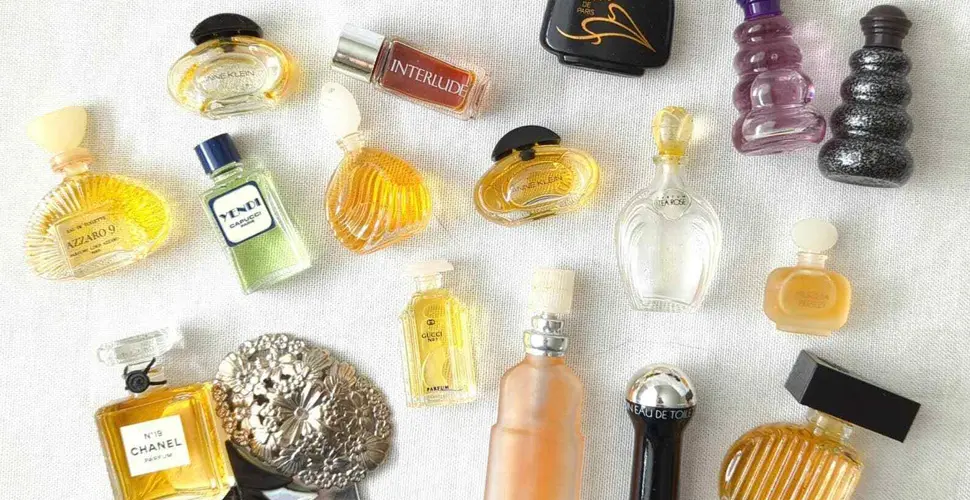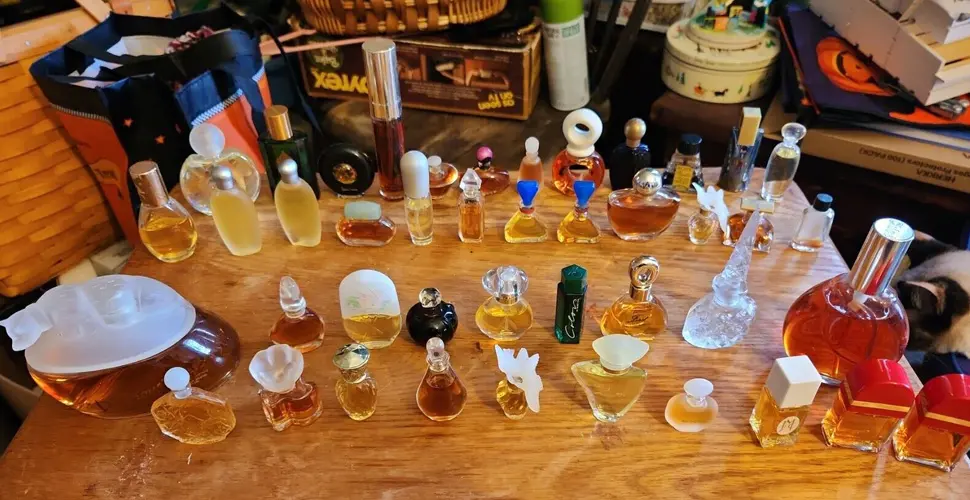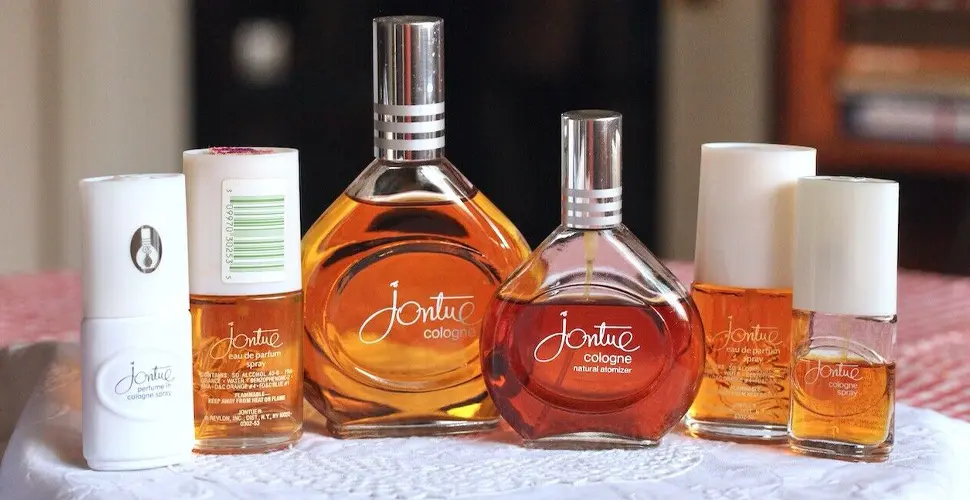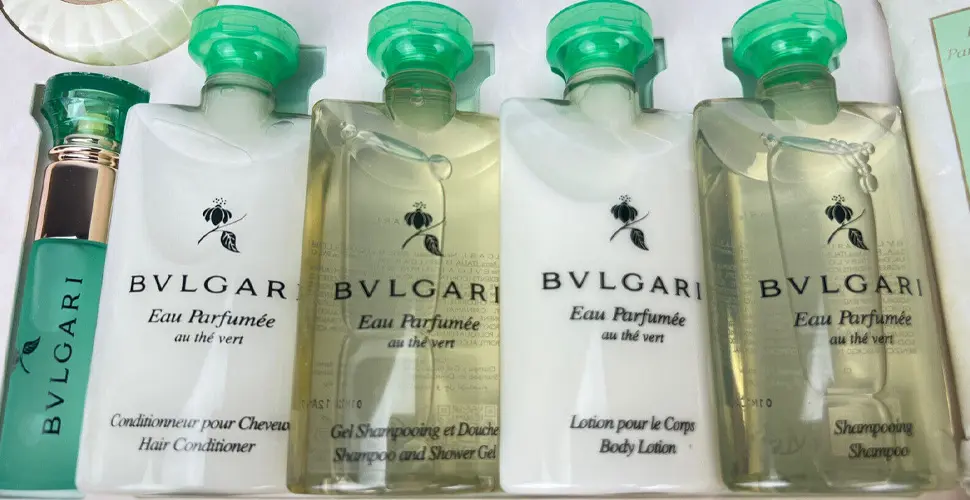The History of Perfume in the Western World
Deana Stallings
- 04 Jan 2023

The History of Perfume in the Western World
Introduction
A spritz of fragrance conjures memories that last a lifetime; the smell of plumeria on a warm Hawaiian beach, a whisp of lavender wafting through a Provence garden, or the irresistable aroma of tuberose as you walk down a crowded city street. The history of perfume & fragrance in the Western world is as old as civilization itself, & has held a place of importance in many different cultures and societies throughout the centuries.
From the ancient Egyptians to the Spanish court of the 1700s, fragrances have been a source of inspiration, allure and ritual. “The introduction of Persian and Arabian perfumes to Medieval Europe in the mid-13th century - as well as trade with India and China - saw a massive increase in popularity for perfumes and scented oils”.
How have fragrances been used in the Western world throughout history? We could say: "What good is history if it doesn’t tell us what scent Cleopatra was wearing the day she sailed up the Nile?” But, alas, archaeologists have still not revealed that tidbit of information!
Still, we can look to history and appreciate the transformation of fragrances for artistic expression, religious rituals, and romantic wooing. A key takeaway is that olfactory pleasures have been an important part of everyday life for thousands of years and weren’t mandatory items of luxury solely for the wealthy. From Marie Antoinette’s lavish rose-scented jasmine balms to an Ancient Greek’s bouquet of herbs and spices, fragrances were part of all levels of society - as enshrined in the classic quote “smell the flowers while you can.”
So, let’s explore the fascinating history of fragrances in the Western world and discover where fragrances began and how they evolved into the essential, modern-day pleasure we enjoy today!
History of Perfume in the Western World
Perfume may be a modernized concept in our society, but its history in the Western world dates back over a thousand years! Way back in the 13th century, noblemen started to realize the luxurious scent of perfumes and its significance when it came to courtship.
Before trends and fashion, perfume in the Western world was widely considered a sign of wealth and prestige, worn to elevate one’s self amongst the upper classes. Men and women alike would wear perfumes before events, such as balls, to attract attention from individuals in the opposite sex. It wasn’t until the 15th century, when French King Louis the XIV embraced scent, that perfume began to be used by the general public.
It seems like ever since, the importance of perfume has had an upward climb. When it comes to the modern era, scents have become more and more significant and now, every store you walk into has an area dedicated to perfume. The incredible selection and variety that comes with luxurious perfumes, for both men and women, has contributed to their sweeping popularity today.
And, we can’t forget the importance of scent packaging, which adds to the appeal of luxury perfumes. You wanna know the thing? Those iconic bottles, with sleek designs, look so stunning and so special! It seems like a simple addition, but it’s actually one of the most important aspects of the perfume experience.
It’s almost hard to describe the impact that perfume has had on our society, but in short – its influence is tremendous! In the modern world, it’s almost taken for granted that fragrances will be used for their calming effects, creating a sense of comfort and luxury that is hard to find elsewhere. In fact, for many centuries now, perfumes have been thought to represent a person’s essence, with its potent, seductive aroma that lingers in the air around them.
The history of perfume in the Western world is one that is powerful and complex, yet has had a huge impact on the way that fashion and luxury has been perceived in society. From its beginnings as a way to attract attention from the opposite sex, to its current role of enhancing a person’s spirit, perfume has been an ever-evolving phenomenon, one that we can’t help but be obsessed with!
Ancient Greece and Rome
Though it’s often said that Rome wasn’t built in a day, it’s unbelievable to think that the art of perfumery appeared millennia ago in ancient Greece and Rome. From Cleopatra’s signature fragrance to the use of aromatherapy for relaxation, perfume has left its mark on history for centuries. Let’s take a look at the wonders of ancient perfume use and how it continues to influence us today!
Perfume use has a long and fascinating history in both Greece and Rome. Ancient Greeks are credited with the first use of it, blending fragrant botanical oils, resins, and petal extracts to make the scent-filled concoctions they adored. In turn, the Romans expanded this concept of perfume use, widely using perfume and aromatic oils in religious ceremonies and infused oils in baths to relax and invigorate their bodies. Ancient Romans also put their own spin on the use of perfume, with emperors like Nero using it in public appearances and gladiators using it to conceal the stench of their arenas.
Though the basics are the same, the materials and methods used to make perfume and fragrant concoctions in ancient Greece and Rome were quite different from what you might see today. Primarily, aromatic oils and flower petal extracts were heavily relied upon for scents. To create those pleasant smells, flowers and herbs were pounded by a mortar and pestle to extract the essential oils. This mixture was then blended with oils such as aniseed or cedarwood and then further blended into even more intricate scents.
Extracts from plants weren’t the only thing used to create aromatic concoctions. The ancient Greeks used a process called enfleurage, which involved placing metal sheets with a layer of animal fat on top of the petals. The fat would absorb the fragrances of the petals, which could then be removed with hot water and finished with alcohol.
The age-old art of perfume making is as captivating to us now as it was back then. From using plants and flowers to create signature scents to harnessing powers of aromatherapy to relax and uplift the mood, the intoxicating history of perfume use in ancient Greece and Rome will forever be remembered.
The Middle Ages and Renaissance
The Middle Ages and Renaissance saw the emergence of the use of perfumes for very different purposes than that of today. Europeans at the time prominently used fragrances to mask the unpleasant odors of disease and pestilence. Over time, though, those same aromas were used to cover the smells of bathing-challenged people, which were common since the only bathing that occurred was in pools shared by many townspeople. The means of creating and using perfume at the time was also a fascinating concept!
Long before history-altering inventions like eau de cologne, artful mixtures of plant extracts seemed to be the only way to create a scented concoction. Using plant extracts such as lavender, rosemary, thyme, oregano and mint, perfumes were made by distillations, essentially creating a water that was heavily concentrated with the essential oils of the plants. This was then applied to clothing, furniture or even the body.
Early Renaissance alchemists and perfumers also began to expand their craft by formulating more complex fragrances made with animal and plant derivatives. Rose oil could be captured through distillation, and essential oils extracted from flowers, bark, roots and resins with the help of distillation. Musk- a somewhat mysterious scent- was captured from deer, beavers, and even civets. Other ingredients such as spices, herbs and a variety of aromatics were included in these novel perfumes.
In the court of Elizabeth I, two of her perfumers, René the Florentine and Rene the Cyclops, crafted perfumes with rose, violets, lilies, and jasmine extracts. The perfumes were applied to clothes and handkerchiefs as well as being used as a “functional anti-sceptic” for the court. The Renaissance, with its inspiration from the surrounding cultures, increased the complexity and knowledge of perfume making. Perfumes and fragrances became increasingly popular and it wasn’t unusual for them to be combined with the elegant ways of dressing of the time. Perfumes scented with bergamot, lavender, and patchouli were now the norm among the wealthy and perfumes created with wild animal musks and perfumes constructed with tobacco, areca-nut, and sandalwood became very popular in the courts of Europe.
While the means of creating and using perfumes in the Middle Ages and Renaissance was different than what we have today, the same concept of trying to mask, cover and enhance the smells around us has remained the same. It’s fascinating that, centuries later, we are still trying to capture the whims and passions of humanity; and our love for smelling nice and feel good all the time!
The Industrial Revolution
The Industrial Revolution was a period of industrial and technological change that occurred between the mid-18th century to early 19th century. This era marked a shift away from traditional hand production and the launch of industrial manufacturing. But did you know that the Industrial Revolution also dramatically changed the way perfume was made and used?
It’s true! During this period, perfume makers began to refine their materials and methods for producing fragrant oils, and the widespread adoption of scientific methods made perfumery an industrial art. For the first time, fragrance makers had access to precise measurements and sophisticated technologies – this allowed them to mix exact quantities of essential oils into precise compositions.
The materials used to create alluring perfumes during the Industrial Revolution also saw a vast improvement. The raw ingredients used to create fragrances were either grown locally, or imported from places like India and Egypt. Sticking with locally sourced ingredients, floral, citrus, and woody resins were all common; whereas imports were often composed of exotic and luxurious aroma products such as ambergris and myrrh.
By the late 1800s there were two main methods used by perfumers to create luxurious scents: enfleurage and maceration. Enfleurage is a cold pressing process in which essential oils are extracted from plant material using fats or oils, and it’s still used by perfumers today. Alternatively, maceration (otherwise known as “mashing”) involved the crushing and pounding of plant materials in order to extract their natural aromatic compounds.
By the 20th century, perfume production was becoming increasingly industrialized – factories replaced small artisan workshops, and advances in chemistry allowed fragrance makers to create synthetic compounds like ethyl salicylate, which could imitate the scents of more expensive raw materials.
At the end of the day, the Industrial Revolution changed the way we think about perfume. Not only did it help make the materials used to make perfume more accessible, but it also enabled perfumers to create more precise and powerful scents than ever before. Who knew advances in technology could be so…fragrant?!
Modern Perfumery
Once upon a time, in the mists of forgotten eras, the art of perfume was born. Ancient people crafted fragrances from the plants and flowers around them, creating aromatic blends with sacred and healing powers. Millions of years later, and perfume has evolved into a sophisticated combination of art and science, blended together with ancient wisdom. We bring you a brief history of perfume in the modern era, as well as an explanation of the materials and methods used to craft modern fragrances.
From its inception in antiquity, perfume has been enmeshed with the spiritual and societal beliefs of humanity. In ancient Egypt, priests and priestesses developed complex fragrances that were used for religious ceremonies and in the mummification process. In ancient China, perfumery was a closely-guarded secret considered a part of the Imperial court’s wealth and power. In the Jewish Talmud and the Bible, incense was used to elevate the senses and create an atmosphere of divine worship. Clearly, perfume has been a part of humanity’s culture and way of life for centuries.
The modern era of perfume began in the sixteenth century, where fragrances began to more closely resemble the exquisite scents that are still popular today. At this time, perfumers began extracting essential oils from plants, herbs and flowers, allowing them to create a wider variety of scents. It was during this period that perfume began to be used for personal adornment as well as spiritual and ritualistic practices. By the eighteenth century, the art of modern perfumery began to take shape and perfumers in Grasse, France, were creating fragrances for the royal court.
Today’s modern perfumes are even more complex than those of long ago. This is in large part due to the science of aromatic chemistry and advanced technology, the materials and methods of which allow perfumers to create fragrances with infinite combinations of aromatics. To craft modern fragrances, perfumers blend base notes, top notes and heart notes each of which has its own purpose in creating the desired effect. Base notes form the foundation of a scent, providing depth and lasting power. Top notes are the first thing one smells when applying a perfume, and they create an immediate impact. Finally, heart notes are a blend of both base and top notes and are often the longest lasting elements of a fragrance.
When formulating a fragrance, it takes a perfumer’s expert knowledge and skill to mix and match different essentials oils and aromatic compounds in the desired proportions. This is in order to create a unique, individual scent, full of character and emotion. Ultimately, creating a scent that appeals to the senses of the wearer enhancing an individual’s presence, mood and attitude.
The history and background of perfume in the modern era is a testament to the power of the human imagination. Fragrances crafted through a combination of creativity and science, artistry and technology, have been delighting wearer’s senses for centuries. Now you have a better understanding of the materials, methods and science that go into creating modern perfumes.
Conclusion
In conclusion, it is evident that the history of perfume in the western world is an amazing story with influences from centuries of culture. From the Ancient Egyptians and their pomades, to the Renaissance and the rise of modern perfume companies, perfume has been used to allure, mystify, and inspire, and given us insight into the lives of ancient peoples.
The modern perfume industry is even more fascinating, with a plethora of unique scents for all imaginable occasions, from special occasions and work, to a night on the town and even bedtime rituals. There are countless options of perfumes to choose from, and an endless variety of experiences to choose from.
It is no wonder why perfume has such a star-studded history! So, why not take action and explore the next step in your personal journey to create your own signature scent? Use it to make a lasting impression on your loved ones and explore a world of fragrances to awaken your senses and exercise your creativity.
Let’s pay homage to generations of perfume-lovers who have come before us and reflect on how far this craft has progressed. Perfume is an art form that celebrates individuality, and there’s never a better time than now to make a statement with the perfect scent.


